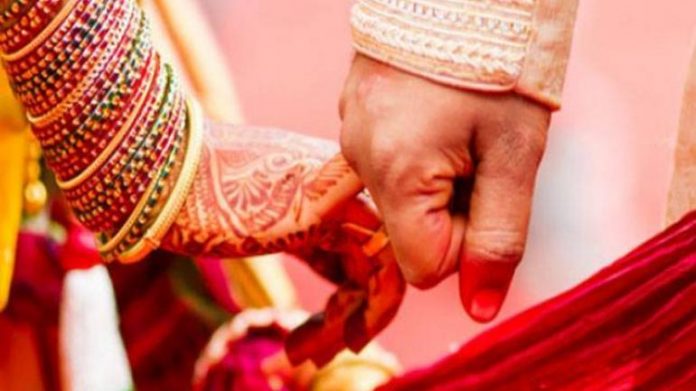The article is written by Priyamvada Singh, a student of LLB(H), from School of Law, Galgotias University, Greater Noida. The article discusses various matrimonial offences in India.
Table of Contents
Introduction
A generally accepted definition of marriage is that of matrimony or wedlock, which is a culturally recognised social sanction of union between two people. This union helps in establishing rights and obligations between two people coming together in this union, along with their children, and the in-laws.
However, the sacrosanct institution of marriage has been existing through generations and has consumed in itself various distorted versions of the same. To correct them, and subsequently, make sure that no innocent life suffers. Different laws and precedents have been brought in by various courts, with the most illuminating ones being from the Hon’ble Apex Court. Such misbehaviours, namely: adultery, desertion, or cruelty, amongst others, are known to be offences against marriage or matrimonial offences.
Instances of matrimonial offences continue to rise incrementally and remain undisturbed despite the various protective laws made by the legislation, and steps taken by the law and order maintainers of the society. With each passing day, more and more women are added into the list of the victims of these legal offences.
What is worse is that most of these cases go unreported, due to the society’s reluctance to acknowledge its morbid parts and victim-shaming. The situation goes further south when that is clubbed with insecurity and an uncertain future. Society, especially women, are made to have little to no faith in the law. They usually get scared of the long, unending legal battles, and get afraid of the massive amount of resources needed to sustain them.
The Burden of Proof (BoP) lies upon the plaintiff urging the offences. Proving said matrimonial offences result in the grounds for divorce and continues to be important in applications in magistrates’ courts for financial relief during and after the marriage. In this article, we shall be discussing several of these legislations and landmark case judgements.

Offences relating to Marriage
Offences pertaining to marriage are provided in Sections 493 to 498, of the Indian Penal Code, 1860 (IPC). These laws deal with the various aspects of a marriage, and their subsequent felonies. The most illuminated of these is Section 498-A, otherwise known as The Cruelty Law. This law, along with The Domestic Violence Act (Passed in 2005), aims to provide substantial protection to female victims of cruelty and domestic violence. With the incrementally increasing cases of such nature, it was observed that such legislation was necessary to ensure that the Fundamental Right to Life and Dignity, entrusted upon each citizen by the Constitution of India, is complied with. Furthermore, cruelty was also made to be a substantial ground for the dissolution of a marriage, too.
Other sections of chapter XX include:
- Mock marriages (Section 493);
- Bigamy (Section 494 and 495);
- Fraud Marriage (Section 496)
- Adultery (Section 497);
- Criminal elopement (Section 498);
Cohabitation after deceitfully inducing a belief of marriage
Section 493 is for every man who deceives a woman into having carnal intercourse with him under the pretext that she is married to him. For this, the Indian Penal Code provides for a ten-year jail term, with a fine. This section has been a topic of heated debate amongst lawmakers for a considerable amount of time.
Marrying again during lifetime of husband or wife
Section 494 states that marrying again during the lifetime of the spouse is bigamy (read with) Sec 50 of the Evidence Act and Section 198 (1)(c) of CrPC.
However, the section provides for exceptions to Section 494 of IPC, viz:
(a) If the first marriage has been declared void by the following:
-by a court,
-holding competent jurisdiction
(b) If the previous spouse has been continuously absent for a period of seven years and
-not heard of as being alive
-provided that the facts are disclosed to the person with whom the second marriage is contracted.
The aforementioned offence is termed as bigamy. It can be afflicted by either of the spouses on to one another.
For a better understanding of the aforementioned provision, Section 17 of the Hindu Marriage Act and Section 108 of the Evidence Act along with the judgment of the Supreme Court in the landmark judgement of Smt. Sarla Mudgal vs Union Of India & Ors (1995) must be referred to. This case laid down the principles against the practice of solemnizing second marriage by conversion to Islam, with first marriage not being dissolved. The verdict discusses the issue of bigamy, the conflict between the personal laws existing on matters of marriage and invokes Article 44 of the Indian Constitution. It is considered a landmark decision that highlighted the need for a Uniform Civil Code.
Concealing the previous marriage before subsequently getting wed
Section 495 talks about a ten year incarceration period, with fine, for a person who hides their former marriage with someone they are getting married to. It is a non-cognizable, bailable offence, with the trial being carried out by first class Magistrate.
Fraudulent conduction of wedding ceremony without a lawful, genuine marriage
Section 496 provides for a jail term extending up to as long as seven years, along with a fine, for anyone who dishonestly, clubbed with a fraudulent intention, goes through the wedding ceremony, despite knowing that he is not thereby lawfully married.
Adultery
Earlier, Section 497 gave way for a jail term up to five years, with or without a fine, to a person who had sexual intercourse with the wife of another man without the consent or connivance of that man. If it was not rape, the man would be guilty of the offence of adultery. Meanwhile, in such a case, the wife would not be punishable as an abettor.
It is important to note that this law has since been decriminalised but continues to be strong grounds for divorce.
Enticing a married woman for illicit sexual relations
Section 498 of the IPC provides for a two-year jail term, with or without a fine, for anyone who takes, or conceals, or detains, or entices away, any woman who is and whom he knows or has reason to believe to be- the wife of any other man, with the intent that she may have illicit intercourse with any person.
The deceit and fraudulent intention should exist at the time of the marriage.
The essential ingredients of Sections 493 and 496 are as follows:
- the accused must have deceived the woman,
- as a consequence of which she is led to believe that she is lawfully married to him, though in reality, she is not.
Thereby, mens rea an essential component of both these sections. The words ‘deceit’, ‘dishonestly’ and ‘fraudulent intention’ have been used in Sections 493 and 496 respectively. This means that in both the sections while the man remains aware that they are not married, the woman is cheated on by the man into believing the same to be true.
Landmark Judgments
In a landmark case of Subhransu Sekhar Samantray v. The State (2002), the Orissa High Court contended that the statement of the prosecutrix that she had resisted the establishment of sexual relations with the accused, but when he put vermillion on her head and declared her as his wife, and alleged that he would accept her status in his life publicly after getting a job she submitted herself to his advances, is sufficient to constitute an offence under Section 493 of the IPC.
In Kashuri v. Ramaswamy (1978), the court said, “the proof of sexual intercourse has to be inferred from the facts and circumstances of a case as direct evidence can rarely be proved”.
When the question about Section 498 arises, a landmark decision is taken to be that of Alamgir v. State of Bihar (1958), wherein the court said that “if a man knowingly goes away with the wife of another in such a way to deprive the husband of his control over her, with the intent to have illicit intercourse, then it would constitute an offence within the meaning of Section 498”.
The Apex Court, in the case of Mohd. Hoshan vs. State of A.P (2002) concluded that the issue of cruelty, by one upon the other is essentially a question of fact, and is quite subjective in nature. The impact of complaints, accusation or taunts on a person amounting to cruelty depends on various factors of the victim, viz: sensitivity, socio-economic background, education etc.
The court further elaborated that mental cruelty varies from person to person- depending on:
- the intensity of the sensitivity,
- degree of courage, and,
- endurance to withstand such cruelty, and that each case has to be dealt with on an instant case basis.
However, as these reforms have made their way into the legislation over the course of the past two decades, a common criticism witnessed against laws relating to matrimonial offences in India has been that women misuse these laws. This allegation has often been made by various sectors including the police, politicians and even judges of the High Courts and the Supreme Court.
The allegation of misuse is made particularly against Section 498A and also against the offence of dowry death in Section 304B. The Supreme Court less than a decade ago, in the landmark case of Sushil Kumar Sharma vs. Union of India and others (2005), observed that the object of the provision was to prevent the dowry menace. But many instances have since come to light where the complaints are not in good faith and have been filed with perverse motive.
Sometimes unfavoured, unwanted media coverage adds to the misery. However, the 243rd Law Commission’s Report, which came out in August 2012, observed that the misuse of law is not a ground to remove the provision from its efficacy since what is involved is a larger societal interest.
The question, thus involved is which remedial measures must be taken to prevent such abuse of well-intentioned legislation. The constitutionality and intra vires nature of the law definitely isn’t a licence for people to harass others for personal vendetta. It thus becomes necessary for the lawmakers to find out methods of how frivolous complaints or allegations can be appropriately dealt with.
Less than a decade ago in another case of Arnesh Kumar v. the State of Bihar and Anr (2014) the Supreme Court declared with particular reference to Section 498A, that no arrest should be made immediately in the offences which are allegedly committed by the accused and the offence is cognizable and non-bailable, and went on to lay down crisp guidelines for the police officers to follow relating to the arrests made under the section, due to increase in a number of seemingly false complaints.
Conclusion
Matrimonial offences are multi-causal and multi-dimensional in nature. It is impossible to justly address them with a straitjacket method. It transcends beyond culture, and socioeconomic status. However, there definitely are underlying common factors. The rising cases of matrimonial offences against women have their roots deeply ingrained in indifference, and negligence that is primarily the result of general acceptance of men’s superiority over women, which is evident from the gender specificity of the nature of these offences.
Among the various kind of offences against women prevalent today are the marital offences including bigamy, adultery, criminal elopement among others and the one that is probably the most common offence is cruelty. Over time, courts have broadened the ambit of the definition to include within it different instances. The provisions dealing with matrimonial felonies have been framed in a way that raises a presumption against the accused if certain minimum requirements are met.
Yet, there is still a long way to go for such laws to have optimal usage. There is still room for clarity in these laws, for clashing precedents to be done away with. It is imperative to do so, in dealing with these problems. Since the nature of these offences involves a major conflict of interests, they need to be dealt with in a way that there is a minimum loss to the family and its associate factors, viz: children. The time is ripe for women to start raising voice against such injustices. The Constitution under Article 51A(e) demands that every citizen of India renounce practices that are derogatory to the dignity of women. There is also a need for general reform in the law to protect a woman’s physical and personal dignity in the role of a wife, against violence by the husband.
LawSikho has created a telegram group for exchanging legal knowledge, referrals and various opportunities. You can click on this link and join:
 Serato DJ Crack 2025Serato DJ PRO Crack
Serato DJ Crack 2025Serato DJ PRO Crack










 Allow notifications
Allow notifications



